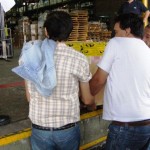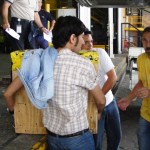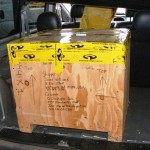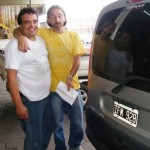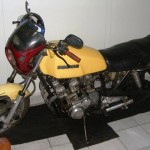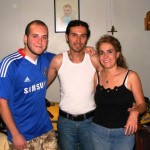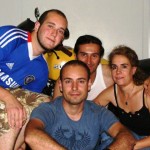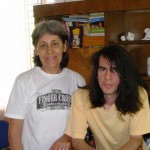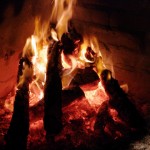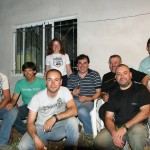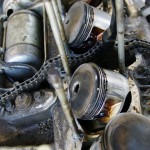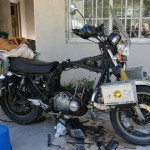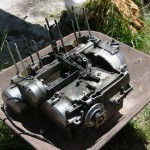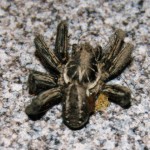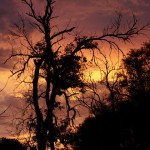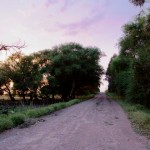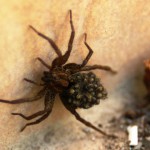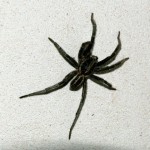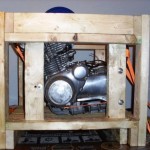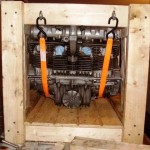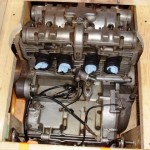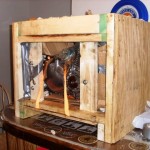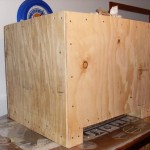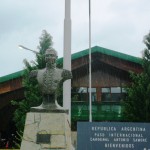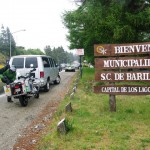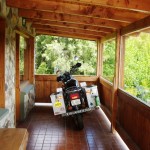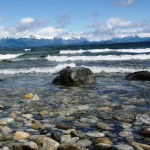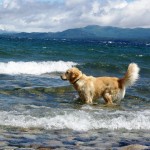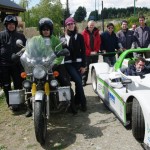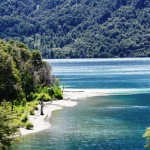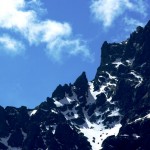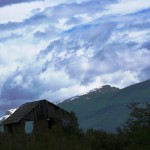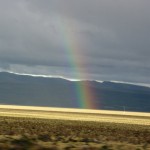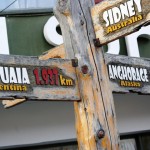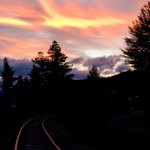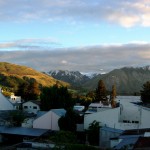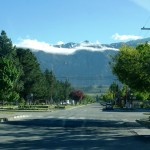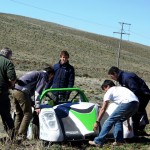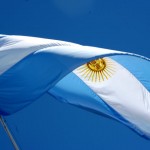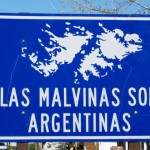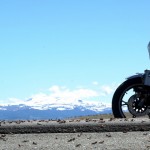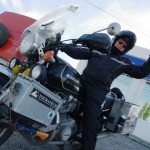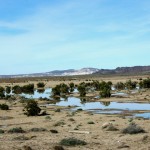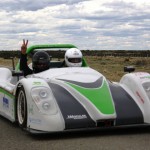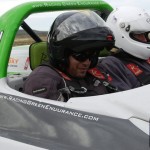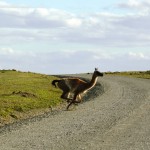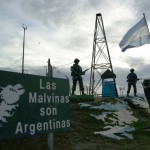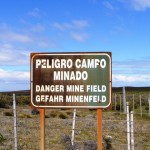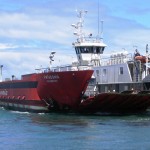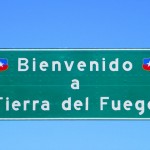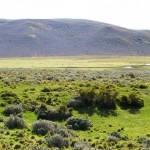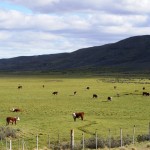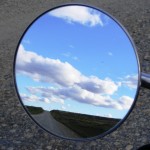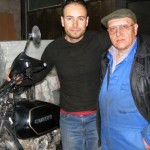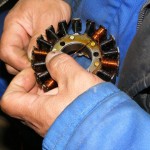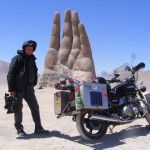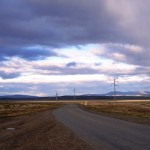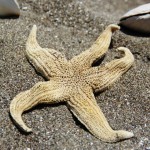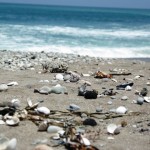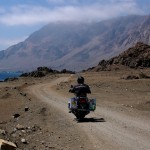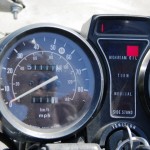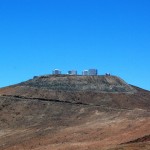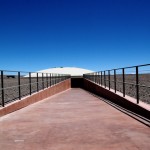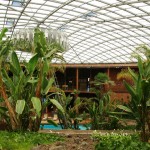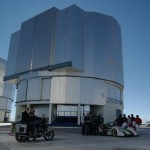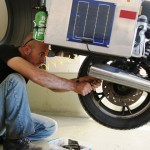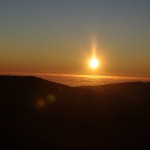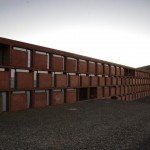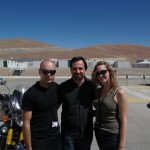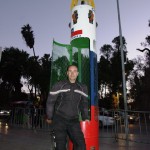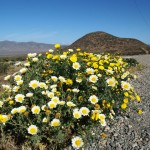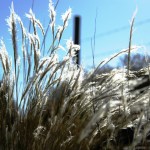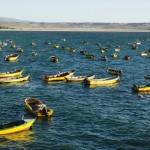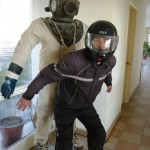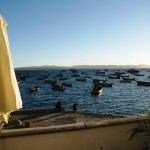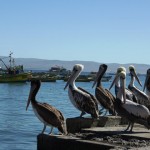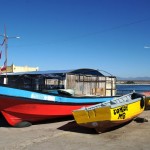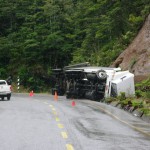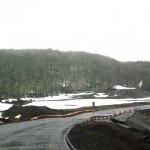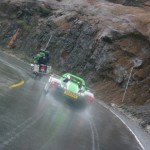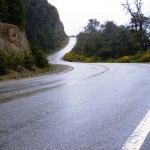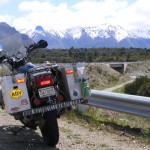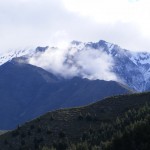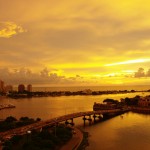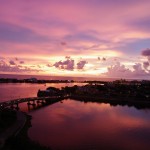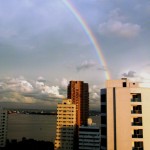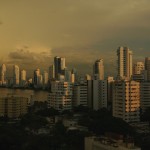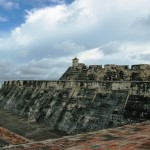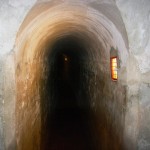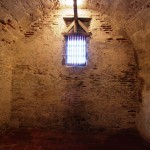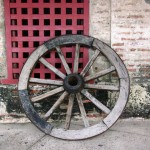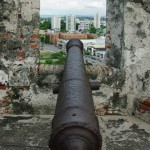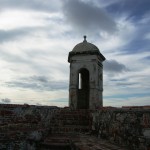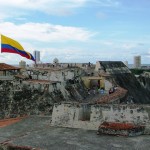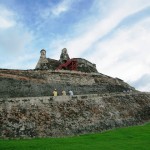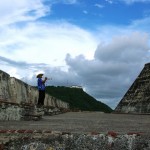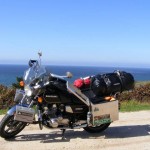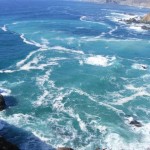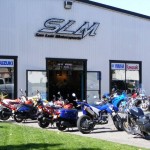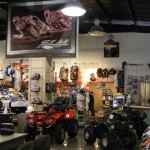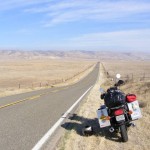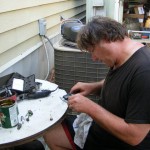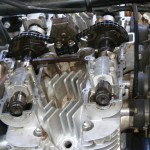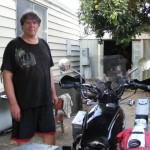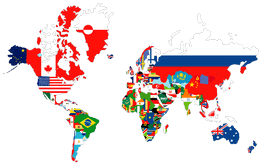January 14th, 2011 - Getting The Motor Out of Customs
Jared emailed me with the delivery date of the engine and the waiting was over. The crate would arrive in Buenos Aires on Monday, and it would be ready to be picked up by Tuesday. I packed a little backpack with a shirt, my knife, my small laptop and headed out for the capital city, 500km to the north.
While we were searching for parts in the early stages, Rich Suz, a fellow motorcyclist emailed another GSR member, Adrian Sayanes, in Argentina for help. Adrian emailed me his phone number and offered his assistance, so I took him up on it. He would pick me up at the bus station in Buenos Aires when I arrived, and would help me to get the engine out of the customs.
I had to take two buses to get to B.A. One from Otamendi to Mar del Plata and another to B.A. The main Buenos Aires bus station is the size of the Atlanta airport. With hundreds of bus companies, gift shops, restaurants, and piles of luggage, it was overwhelming for a guy who spent the last two months in one of the most desolated part of the world. The area was packed with Bolivian immigrants who were sleeping behind the fences in the open.
I met Adrian and his brother Esteban at the station. They had to take a long train ride and a bus to get to me, and from the first moment they were nothing but helpful. After a drink at the station, I was relieved to find out that they both spoke very good English, and we got along well. They generously put me up in their mom’s house, and fed me the most delicious pizza I’ve ever had.
I was tired and fell into a peaceful sleep, but woke up at 3:30 am to a racket. The skies were as bright as day, and small rivers were forming in the streets from the massive thunderstorm outside. The rain came down with such ferocity that it killed nine people in a flash. I kept thinking of the poor immigrants that were camped out in a canal next to the railroad tracks under plastic sheets and inadequate shelters.
At 7:30 am, we tried contacting AmeriJet, the airline which shipped the cargo, but there was no answer. We called and kept calling until at 8:30, we finally got through. They didn’t have the engine nor did they know where it was! The guy said that AmeriJet doesn’t fly into Argentina, and they must have put it on another flight. He asked for some info and said he’d get back to me on that. He didn’t sound very promising, so Adrian and I headed out in search of internet so we could call the AmeriJet headquarter in the US to find out what to do. We found a little café with internet, and set up our command center. For the next two hours, I called everyone I could, and we finally succeeded. The engine came on another flight from Florida and it was at the airport already.
With no time to waste, we started our quest at the airport in the hot and humid weather of B.A and it didn’t stop until 8:00 pm. Since we didn’t hire a customs broker, we had to do everything ourselves, and not knowing what to do, we walked around aimlessly and did our best. Actually Adrian did his best. I was just the guy who followed him to the bank, and coughed up money for this paper and that paper. Right off the bat, the airliner charged us $95 for something they couldn’t even explain themselves. It had something to do with the storage and transportation inside the airport. We chased papers one office after another until at around 4 pm; we first got to see the crate. It was monstrous as I expected. The boss man came to inspect the contents, but they had to get into it first. It took a guy with an electric drill a good while to extract twenty or thirty screws from the top cover just to expose the top of the engine. So they weren’t too enthusiastic to dig in further which would reveal the expensive new parts from Z1 enterprise.
The boss man said that importing a complete engine for personal use was illegal in Argentina, but he made an exception; reading Jared’s letter explaining the situation in English and Spanish. He appraised the value of the complete motor at $400 (the new gaskets and seals alone were 400 bucks) and set the tax at 200%. So we walked back to the bank for the 6th time and paid the money. As we thought it was over, they charged us another 90 bucks for storage fee, inspection fee, (for the guy who wrestled with the screws to get the top off) and forklift before releasing the engine to us. They charged us for two days of storage, but in reality, the engine arrived at the airport at 11 pm on Monday, and we were taking it out on 6:00 pm on Tuesday, not even a full day! But who can argue technicality when bureaucracy prevails every time. So again I paid the man.
Now that we had the engine, we had no way of getting it back home. Adrian’s car is a small BMW and the crate was as big as his trunk. Opening the crate was out of question. Adrian found a guy and after negotiating, they loaded the box in the back of their van for another 100 bucks to take back to town. (Adrian paid for the van and would not even consider being reimbursed, thanks again Adrian). The van driver suggested for us to go ahead, and he would follow, but I wouldn’t have any of it. I jumped through way too many hoops to get my hands on this engine and I wasn’t about to hand it over to anyone else. I rode in the back with the engine while Adrian took the lead to his house.
If getting the engine out of the customs was hard, we were faced with a bigger problem. The bus company refused to take the engine as my luggage due to its ungodly weight. The train turned out to be full and not going to Otamendi, and renting a car from B.A to Otamendi was $350 one way plus gas. We called everyone we knew for hours, but no solution came out of it. So we gave up for the night.
Adrian invited me to his place to have dinner with his girl friend, and they fed me delicious foods until I was about to pop. He dropped me off at his mom’s house gain and this time I slept the whole night after three days. The next morning I woke up with good news. Adrian found a cheap trucking company to take the engine to Otamendi, but we had to drop off the crate at their terminal. Adrian’s mom called around and found a van with a driver for $45, and once again we loaded the crate and headed for the terminal. Another $40 later, the engine got loaded up and it will arrive in Otamendi on Friday. The madness was over. Esteban, Adrian’s brother, took me to the bus station and put me on the bus to Mar del Plata, and I was home free.
Adrian and his whole family literally spent two days on the phone to make all these arrangements, and I have no clue on how I would have done it without their help. Adrian skipped a day work without pay, (despite getting in trouble) and spent every minute of it helping me with anything and everything. I don’t know how I could even begin to thank these amazing people who extended their generosity to a complete stranger with just an email.
When I came to Argentina, I was impressed with its vast landscape, towering mountains and beautiful glaciers, but what most strike me is its people. Nowhere in the world have I ever been this welcomed as Argentina. It’s an honor to be in this beautiful country.

